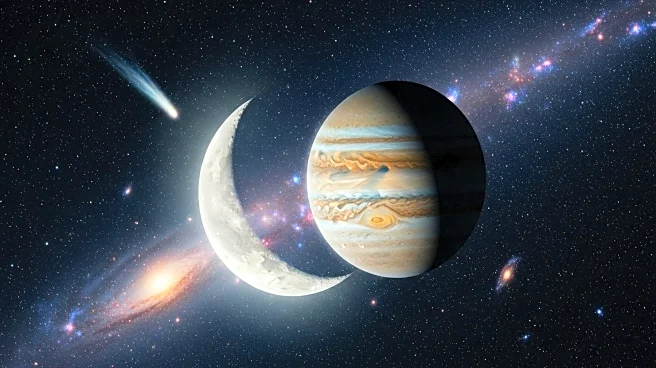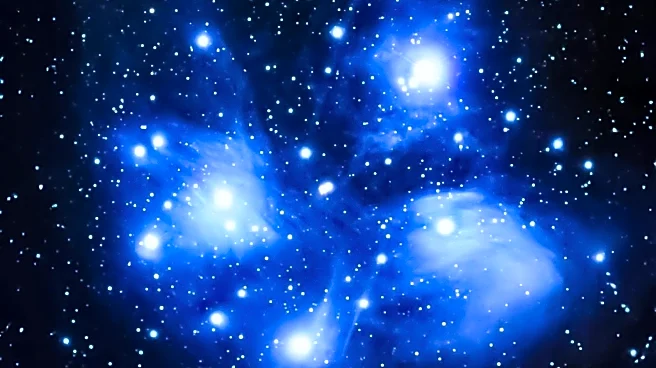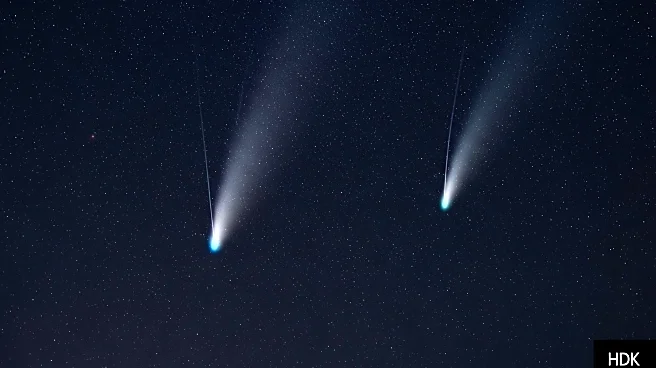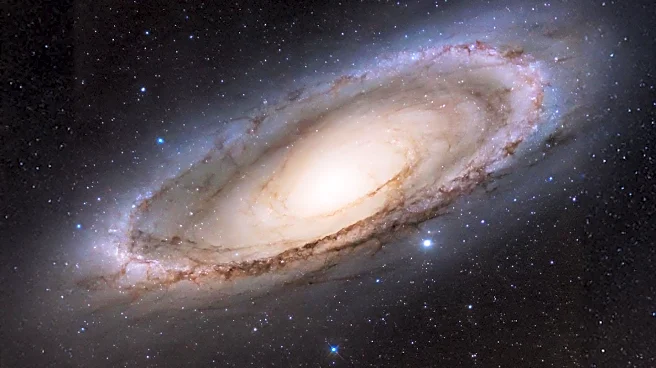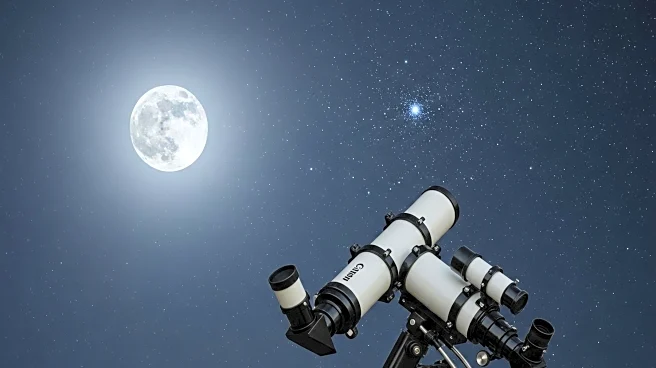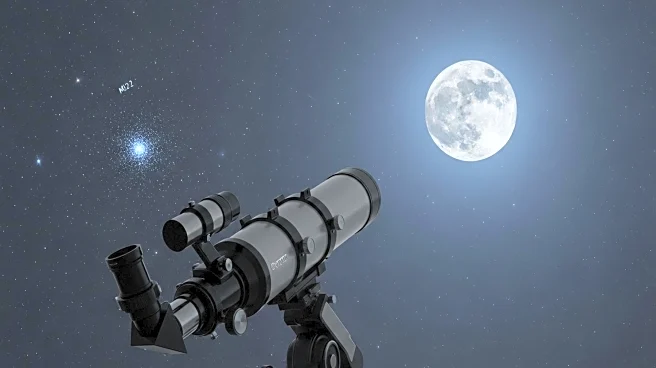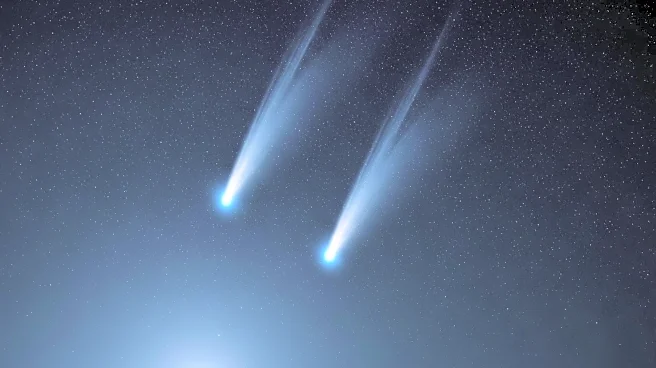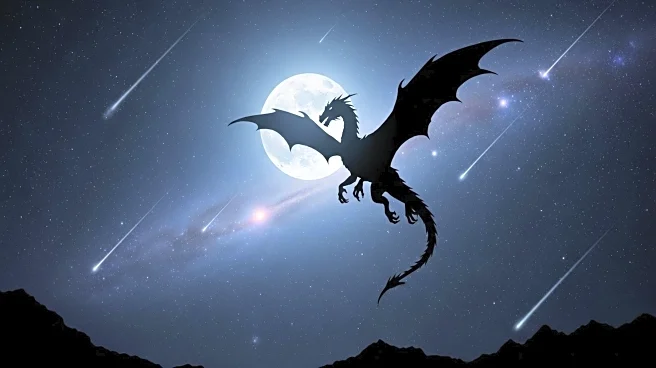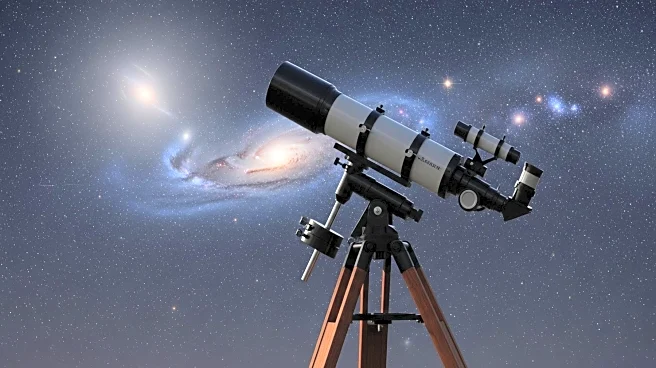What's Happening?
Astronomy enthusiasts are in for a treat as Ceres, the largest object in the asteroid belt, is visible in the constellation Cetus throughout October. According to Astronomy Magazine, Ceres will be passing close to the 5th-magnitude star Phi2 Ceti, making it easier to locate. The best viewing time is approximately two hours after sunset, before the Moon rises, when Ceres is about 15° high in the east. The article suggests using binoculars or a telescope to spot Ceres, which will be glowing at magnitude 7.6. The visibility of Ceres is expected to continue throughout the month, with its position shifting slightly each night.
Why It's Important?
The visibility of Ceres offers a unique opportunity for amateur astronomers and sky watchers to observe one of the solar system's significant celestial bodies. Ceres, being the largest object in the asteroid belt, provides insights into the composition and characteristics of early solar system materials. Observing Ceres can enhance public interest in astronomy and science education, encouraging more people to engage with space exploration and observation. This event also highlights the importance of celestial navigation and the role of amateur astronomers in contributing to astronomical discoveries.
What's Next?
As Ceres continues its journey through Cetus, observers can expect its position to change slightly each night, offering multiple opportunities for viewing. The article notes that on October 11, Ceres will be about 10’ southwest of Phi2, allowing for continued observation. Additionally, the magazine mentions upcoming celestial events, such as the transit of Jupiter's moons Io and Europa, which will be visible on October 11. These events provide further opportunities for sky watchers to engage with the night sky and explore other celestial phenomena.
Beyond the Headlines
The visibility of Ceres in Cetus not only serves as an observational opportunity but also underscores the importance of understanding our solar system's history. Ceres, as a dwarf planet, offers clues about the formation and evolution of planetary bodies. This event can spark discussions about the potential for future space missions to Ceres and other asteroids, which could yield valuable scientific data and resources. The increased interest in such celestial events may also drive advancements in telescope technology and observational techniques.

